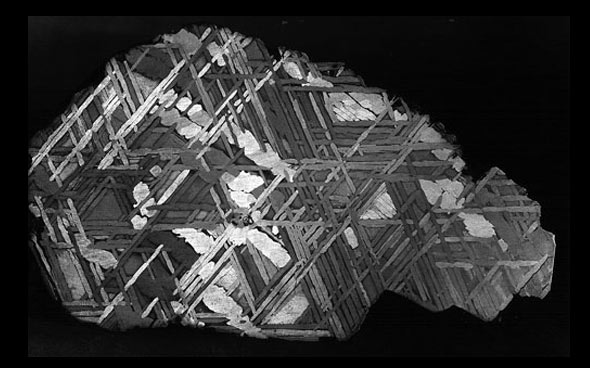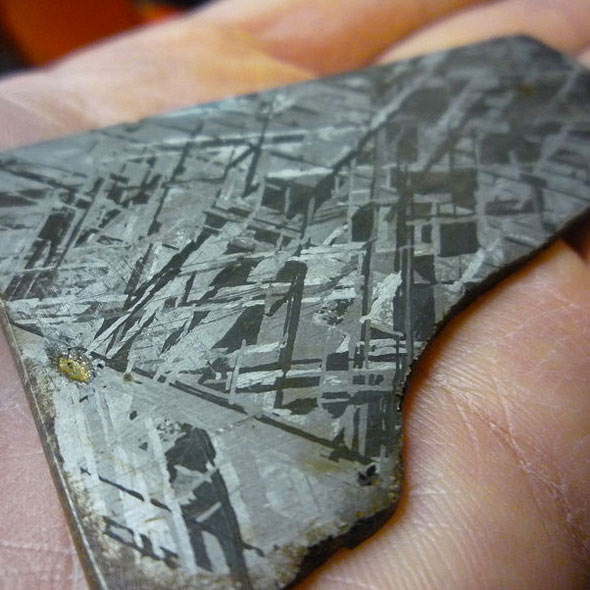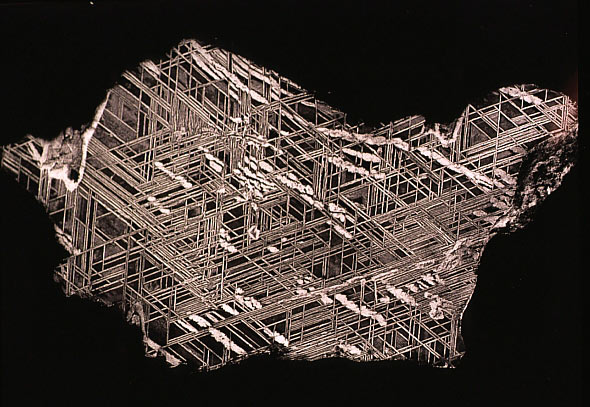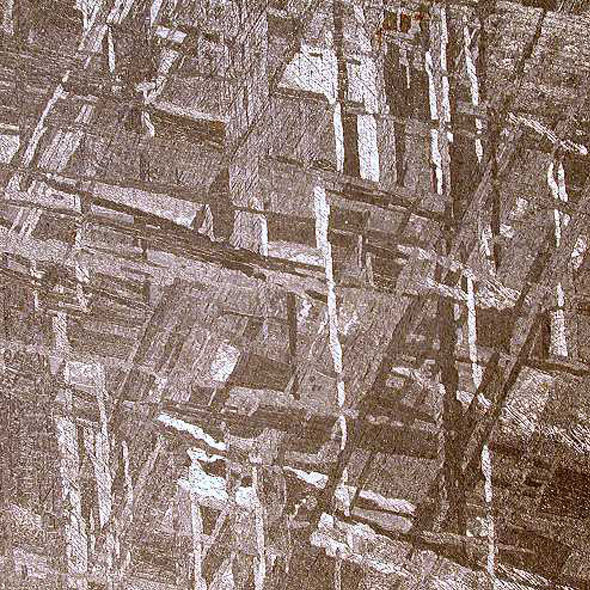Pattern Inspiration | Widmanstätten
InspirationThanks to our facebook fan Justin Kent, I’ve discovered something truly remarkable; the Widmanstätten pattern. Curious about how these three-dimensional looking structures formed, I turned to Wikipedia, which told me this: Widmanstätten patterns, also called Thomson structures, are unique figures of long nickel-iron crystals, found in the octahedrite iron meteorites and some pallasites. They consist of a fine interleaving of kamacite and taenite bands or ribbons called lamellæ. Commonly, in gaps between the lamellæ, a fine-grained mixture of kamacite and taenite called plessite can be found. Cool! (I think.)
And the mouthful of a name? In 1808, these figures were named after Count Alois von Beckh Widmanstätten, the director of the Imperial Porcelain works in Vienna. While flame heating iron meteorites,Widmanstätten noticed color and lustre zone differentiation as the various iron alloys oxidized at different rates. He did not publish his findings, claiming them only via oral communication with his colleagues. The discovery was acknowledged by Carl von Schreibers, director of the Vienna Mineral and Zoology Cabinet, who named the structure after Widmanstätten.
However, it is now believed that full credit for the discovery should actually be assigned to G. Thomson as he published the same findings four years earlier.
Now we all know!
-Claudia






